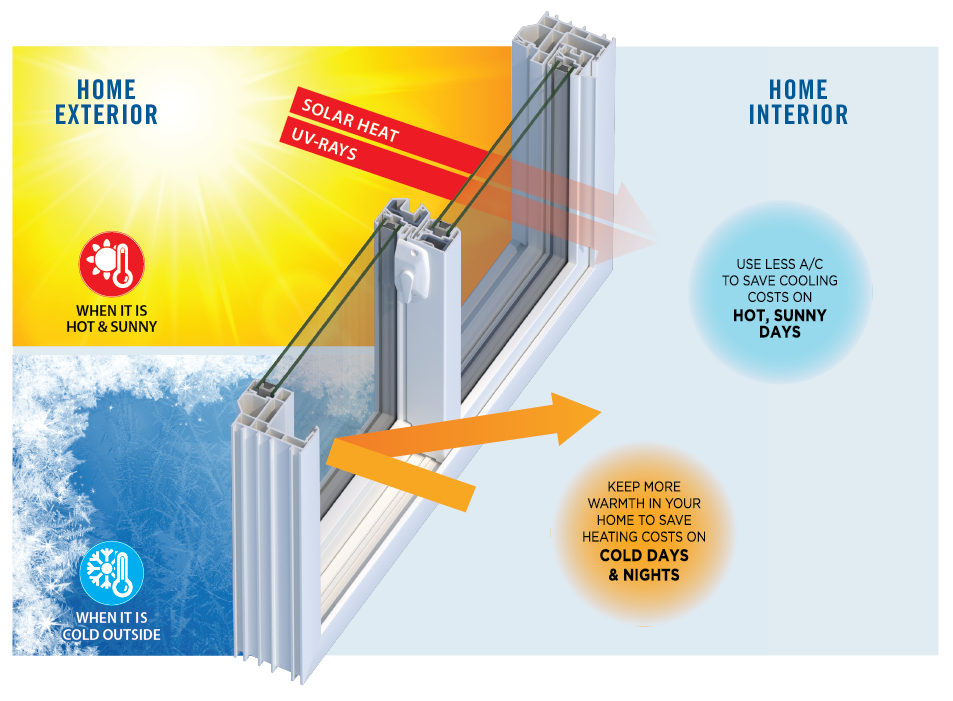
Any opening in your wall reduces the overall efficiency of the wall structure. That's where energy escapes the easiest all year-round. Let's talk about replacement windows and what we need to be looking for when discussing energy efficiency.
Replacement windows, what should we be looking for?
The first thing you want to look for when you think about new windows and energy efficiency is the Energy Star label. Finding that Energy Star label, much like you might find it on other appliances in the home, is a great way to point you in the right direction.
The Location of the Window
There are many different options and variations when we're looking at windows, and you want to keep in mind the location of where the window is going to go. So think about the window over your kitchen sink. You might want to choose that to be a casement or a sliding window, so it's easier to operate, as opposed to a double hung. If you have a window that extends all the way up to the ceiling, it might be a little bit different to operate. So you want to make sure you're considering the product's location before you make those selections.
Dual Pane Windows Are the Gold Standard
In regards to energy efficiency, dual pane windows are sort of the gold standard. So it is usually a two pane insulating glass window with an exterior and interior pane and insulating gas between them. The gas is usually argon or krypton, and what that does, it prevents the cold from coming into the home during the winter and the cooled air escaping the home during the summer. A dual pane window is a great product that's going to last for a long time and provide exceptional energy efficiency.
But what we're seeing is more and more homeowners like to choose a triple pane window. It provides an additional pane on the inside, a little bit thicker cavity for more energy efficiency. This will, of course, be a bit more energy-efficient to help save on those utility bills. If we move up to a three pane window, it will cost a little more, but in many parts of the country, it makes a lot of sense to choose this option.
One of the things that many of our customers talk to us about is condensation on windows.
What's causing condensation? There are three main areas where condensation can occur. Condensation can occur on the inside of the pane and glass. It can occur on the outside of the pane in the glass, and it can occur between the panes of glass. So on the inside of the pane, the cause of condensation is when it's cold outside, and you have a hot humid environment inside your home. Maybe you're cooking in the kitchen, or you've got a bathroom where you just took in a hot shower. Condensation can occur there because the air touches a cool surface. Much like you will have a cold glass of water on a hot summer day, and you'll get condensation on the side of the glass. The same thing can occur on the exterior of the window when you have hot, moist air touching the cold exterior of the glass, which will cause condensation on the outside of the window. Finally, when you have condensation between the panes of glass, there's nothing you can do there. That's a sign of what we like to call insulating glass seal failure, which is a sign that your window requires replacement.
A three pane window would be less likely to have condensation.
If you do choose the three pane window, it's going to increase the insulating value of that window and prevent condensation from forming both on the interior in the exterior. It helps provide it a little bit better insulating value across the panes of glass, so that would help reduce the chance of condensation forming.
Regardless of what a homeowner chooses to do, just make sure that you choose a quality, energy-efficient product because this is something you don't want to turn around and redo in five years again.
We hope this helped you learn about window condensation. For a free in-home consultation fill out our online form or contact Windowfits at 951-677-2593.
